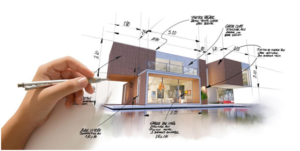
We all have heard what NATA is but do we know how this journey started? Let us look at what NATA is and who administers it.
Started in 2006, National Aptitude Test in Architecture (NATA) is administered by Council of Architecture (CoA) in order to qualify for Bachelor of Architecture (B.Arch.).
Unlike any other entrance test, NATA is an aptitude test that assesses a candidate’s ability through a variety of testing formats. NATA scores are evaluated based on some criteria including eligibility criteria governed by CoA.
Important Notification: NATA exam 2024
| DATE AND TIME OF THE EXAMINATION | |
| NATA 2024 EXAMINATION COMMENCING FROM | APRIL 6TH 2024 |
| SESSION 1: 10 AM TO 1 PM (3 HOURS) | SESSION 2: 1.30 PM TO 4.30 PM (3 HOURS) |
What is the purpose of NATA exam?

The main objective of the NATA exam is to assess the aptitude of aspiring architects and determine whether they are prepared to pursue Architecture undergraduate programs. This thorough evaluation offers insightful information about the applicant’s capacity for original thought, analytical abilities, and willingness for architectural design.
In addition, NATA provides a standard way of measuring and categorizing candidates according to how well they performed on the test. It guarantees an impartial and open admissions process, allowing colleges and universities to accept students on the basis of their aptitude and creativity.
What is the schedule of NATA exam?

Before we get to understand the schedule of NATA exam, let us know a little about its rules and regulations. It says that a candidate can appear for maximum of 3 attempts in a year. The best score would be considered valid during declaration of the result. The validity of NATA score is 2 years.
NATA exams are conducted on weekends starting from April to July in 2 sessions. Students get to choose their preferred location and session.
NATA exam is conducted in 2 sessions. It happens because of the number of candidates with respect to their allotted centers. The duration of each session is 3 hours. Session 1 is conducted around 10 AM to 1 PM. And after a break of 30 minutes, session 2 is conducted from 1.30 PM to 4.30 PM.
What is the test format of NATA?
Well, as we have understood the whole schedule of the NATA exam, we will now understand the test format of NATA. So let us begin with breaking this paper into 2 important parts: PART-A and PART-B. The paper comes in both English and Hindi for better comprehension of the candidates.
PART-A: Drawing and composition test
The duration of this test is 90 minutes. This test carries 80 marks where the candidate has to attempt three questions. The three types of questions are:
1. Composition and Color –
In this question, the candidate has to create a composition on a given situation and color it appropriately. It can also ask for re-arranging various shapes and then coloring it. This part carries 25 marks.
2. Sketching and Composition (Without color) –
It assesses candidate’s ability to draw, visualize, depict a situation, involving buildings/its components, people, environment, products with the proper comprehension of proportion , scale, textures, shades, shadows etc. This test too contains 25 marks.
3. 3D Composition –
The candidate is asked to create a 3d composition based on some situation.
PART-B: Reasoning and Mathematics

The duration of this part is 90 minutes. This part carries 120 marks with MCQs and the mode of this test is computer based. This computer based test is divided into 2 types of questions.
Type 1 – There are 30 questions of 2 marks each (60 marks) in this type.
Type 2 – There are 15 questions of 4 marks each in this type (60 marks).
These parts include the following topics:
- Non-verbal reasoning: Ability to reconstruct 2D and 3D composition, knowledge about the composition, and understanding of concepts and technical part.
- Logical Understanding and derivation: It assesses a candidate’s skills of decoding a situation, composition and defines the meaning of it.
- G.K. – General awareness is asked about the upcoming events, history progression etc.
- Architecture and Design – General awareness about important and famous buildings, new materials, new construction techniques etc.
- Language Interpretation – Ability to identify the mistakes and correct sentences, find meaning and understanding about the grammar.
- Design thinking and sensitivity – Ability to observe and understand how to observe and analyze data, understanding the sensitivity of user to product, space, environment etc.
- Numerical Ability – It is a perfect combination of creativity and calculation. Basic mathematics is associated with creative thinking.
Eligibility Criteria of NATA:
Let us now look who are actually eligible to give NATA exam. In order to give NATA, candidates must have:
- Cleared or appearing in 11th class examination with PCM as the subjects.
- Cleared or appearing in 12th class examination with PCM as the subjects.
- Cleared or appearing in Diploma examination with Mathematics as the subject.
Candidates who have passed examination with Physics, Chemistry and Mathematics as compulsory subjects with at least 50% marks in aggregate or passed Diploma with Mathematics as the compulsory subject with at least 50% marks in aggregate.
The application fee of NATA is as follows:
| Payment (based on no. of tests opted for) | In India | Outside India (in INR.) | ||||
| General/OBC (NCL) | SC/ST/EWS/PwD | Transgender | ||||
| Male | Female | Male | Female | |||
| Fee for any single test | 1750 | 1250 | 1250 | 1000 | 1000 | 10000 |
| Fee for any 2 tests | 3250 | 2250 | 2250 | 1750 | 1500 | 18000 |
| Fee for any 3 tests | 4500 | 3000 | 3000 | 2500 | 2000 | 25000 |
Qualifying Criteria of NATA:
- A minimum of 20 marks must be secured by the candidate in PART-A
- A minimum of 30 marks must be secured by the candidate in PART-B
- Overall, out of 200, a minimum of 70 marks must be secured by the candidate.
Benefits of NATA:
Clearly, NATA exam comes with a lot of advantages. The main benefits of NATA are mentioned below for a better comprehension:
1. Standardized Assessment:
NATA provides a standardized platform for assessing the aptitude and drawing skills of candidates aspiring to pursue architecture. The exam evaluates candidates’ drawing, observation, aesthetic sensitivity, sense of proportion, and critical thinking abilities, ensuring a fair and comprehensive evaluation process.
2. Wider Range of Colleges:
Many reputed architecture colleges in India accept NATA scores for admission. By appearing for the NATA exam, candidates have access to a wide range of colleges and universities across the country, increasing their chances of securing admission to the best institution that aligns with their academic and career aspirations.
3. Flexible Exam Schedule:
NATA offers multiple exam dates throughout the year, providing candidates with flexibility and convenience in choosing a suitable exam date according to their preparation and schedule.
4. Preparation for Architecture Curriculum:
The NATA exam syllabus is designed to assess candidates’ readiness for the architecture curriculum. By preparing for NATA, candidates not only enhance their drawing and visualization skills but also develop a deeper understanding of architectural concepts and principles, which lays a strong foundation for their academic and professional journey in architecture.
5. Gateway to Architectural Education:
NATA serves as a gateway to architectural education and profession in India. Successfully clearing the NATA exam opens doors to pursue undergraduate architecture programs in reputed colleges and universities of India.
How can crash course from Artans Arts Academy help in saving time and achieving goals?
We at Artans Arts Academy help you provide the best guidance for a secured future. We will now share you some tips you can work upon to clear NATA.
1. A focused study plan:
It covers essential topics, exam patterns, and strategies to maximize performance within a short duration, helping students optimize their study time effectively.
2. Comprehensive coverage of syllabus:
A well-designed crash course covers all the key areas of the NATA syllabus, including drawing skills, mathematics, architectural awareness, and aptitude.
3. Expert guidance:
Crash courses are often conducted by experienced faculty members. They provide tips and techniques to help students understand concepts, improve their drawing skills, and tackle exam questions more effectively.
4. Practice sessions:
Crash course includes many practice sessions, mock tests, and solved examples to help students with learning and build confidence. Such practice simulates examination environment and help students assess their strengths and weaknesses.
5. Time management skills:
By providing structured study schedules, practice tests, and strategies for optimizing time during the exam, crash courses help students with managing their time more efficiently and complete the exam within the allotted duration.
6. Last-minute preparation support:
Crash courses are especially helpful for students who are looking to review important concepts and topics in the final days before an exam or who have little time for preparation. To help students maximize their remaining time and give their best on exam day, they provide focused guidance, quick revision notes, and study materials that are easy to read and understand.
There are a lot of colleges that allow NATA scores for the admission. You will be allotted the appropriate college after reviewing the marks. The score range decides what college you will get as there are specific seats available per batch. Now, let us have a look over the list of some colleges that accept NATA scores for the admission.
Here’s a list of some of the top Architecture colleges in India that accept NATA score for admission:
| Name of the college | Location |
| School of Planning and Architecture (SPA) | New Delhi |
| Indian Institute of Technology – Department of Architecture and Regional Planning | Kharagpur |
| Sir JJ college of Architecture | Mumbai |
| National Institute of Technology (NIT) – Department of Architecture | Trichy |
| National Institute of Technology (NIT) – Department of Architecture | Calicut |
| National Institute of Technology (NIT) – Department of Architecture | Hamirpur |
| Chandigarh college of Architecture | Chandigarh |
| Jamia Millia Islamia – Faculty of Architecture and Ekistics | New Delhi |
| National Institute of Technology (NIT) – Department of Architecture | Tiruchirappalli |
| National Institute of Technology (NIT) – Department of Architecture | Raipur |
| National Institute of Technology (NIT) – Department of Architecture | Bhopal |
| R.V. college of Architecture | Banglore |
| Birla Instuture of Technology – Department of Architecture | Mesra |
| Manipal Academy of Higher Education (MAHE) – Faculty of Architecture | Manipal |
| Anna University – Faculty of Architecture | Chennai |
NATA Counselling:
After the results are allocated, candidates proceed to various counselling platforms for better guidance and knowing the further process.
- ACPC (Admission Committee for Professional Courses), Gujarat – Click here to register for ACPC 2024
- REAP, Rajasthan – Apply for REAP registration 2024 (Site valid after Architecture exam 2024)
- MAHACET Maharashtra – Click here to know more about counselling at MAHA CET
- JOSAA (Joint Seat Allocation Authority) – Click here for JOSAA official website

1. How many attempts can be given in a year?
You can only give maximum of 3 attempts in a year.
2. Which score would be considered valid out of all?
The best out of 3 scores would be considered valid.
3. What is the validity of NATA scores?
The scores are valid for 2 years.
4. Is there any age limit?
NATA doesn’t have any specific age limit until officially declared by the Council of Architecture.
5. Do we prepare students for NATA?
Yes we do. We at Artans Arts Academy prepare students for NATA both offline and online. Offline coaching is available in Jaipur and Kota both; whereas, online coaching is available pan India for the convenience and better learning experience of the students.




Recent Comments